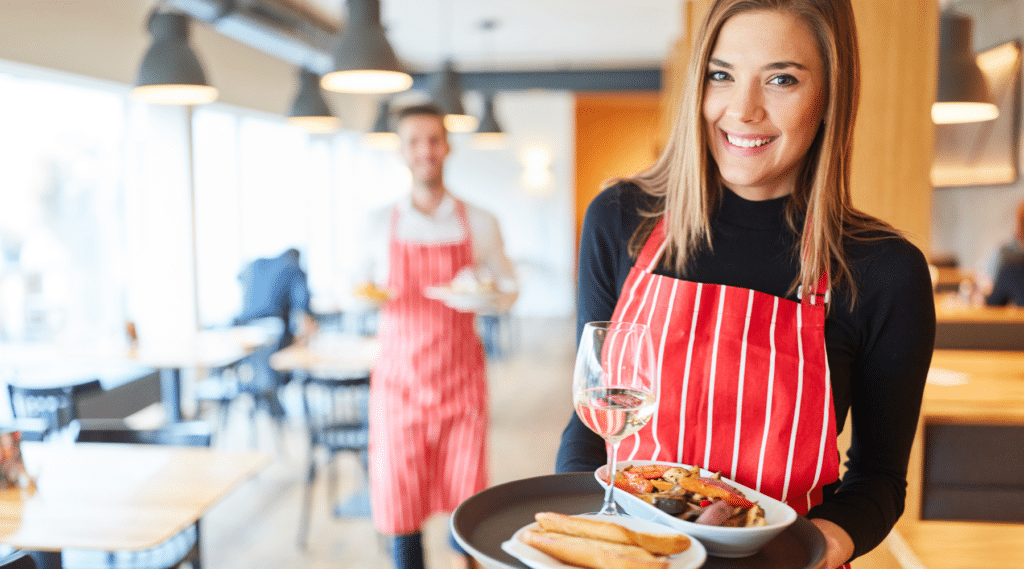Restaurant guest engagement has undergone a significant transformation with the integration of technology. Today, technology plays a crucial role in enhancing the overall dining experience. Now that nearly every guest has a smartphone and mobile applications, restaurants have been able to engage with their guests in innovative ways. From online reservations and digital menus to personalized recommendations and loyalty programs, technology has enabled restaurants to provide seamless and personalized interactions with their guests. Additionally, social media platforms have become powerful tools for restaurants to engage with customers, allowing them to share photos, reviews, and feedback instantly.
Regardless of the restaurant operation you’re running, when it comes to guest engagement, there are several areas and touchpoints to focus on like the ordering process, in-store engagement, post-visit engagement and customer awareness. All restaurants need repeat customers. To do so, they need to know their guests better, so they can improve experience, increase retention, and ultimately make more money in the restaurant space.
Here are a few areas of restaurant guest engagement as well as some companies that are changing the way restaurant’s view that space.
Understanding Today’s Restaurant Loyalty
During the pandemic, the value of having direct communication with customers through loyalty and guest engagement tools became a necessity. Most restaurant chains have jumped into the loyalty game, but even the biggest names struggle to gain enrollment within their customer base. The average restaurant loyalty program only engages 10 to 15% of their customers, and much of that customer database is largely inactive as customers consider participation to require too much effort.
There are a few reasons for this low engagement. First, loyalty programs ask too much of guests. Second, most restaurant loyalty programs are undifferentiated and static. They rely heavily on discounts, and many were designed for the pre-digital era. Loyalty programs should be easy for guests to engage by making it easy to get credit for their purchases and earn benefits, and have an intro reward.
There are three primary types of touch points in a loyalty program. The customer to must (1) enroll, (2) get credit for their purchases, and (3) redeem their rewards. Getting credit is often the hardest part, as it’s difficult to identify customers every single time to get credit for their purchase. There’s a huge cost associated with this friction, and participation in loyalty programs is largely inactive.
There are multiple ways restaurants can increase their loyalty program engagement, and they touch on each of the three touch points:
Promote the Benefits: Clearly communicate the benefits and perks of the loyalty program to customers. Highlight exclusive offers, discounts, rewards, and special events that are available to members. Make sure customers understand the value they can gain by participating in the program.
Simplify Sign-up Process: Ensure that the process of joining the loyalty program is simple and user-friendly. Minimize the amount of information required and offer multiple sign-up options, such as through mobile apps, websites, or in-person at the restaurant. Consider offering incentives, like a welcome bonus or free item, to encourage customers to join.
Personalize Rewards: Tailor rewards to individual preferences and purchase history. Use customer data and insights to offer personalized rewards and recommendations that resonate with each customer’s preferences. This can include personalized offers for their favorite menu items, birthday rewards, or milestone bonuses.
Turning Guests into Repeat Customers
A customer is defined as someone who buys something from a brand, while guests are people who buy into the brand emotionally. While customer data is mostly transactional, guest data includes personalization and an understanding of their needs. To make actual insights from customer intelligence, restaurants need to harmonize all customer data into one record. Once this is done, they can then understand who their actually guests are and take action based on this information.
Another differentiation is between lifetime span versus lifetime value (LTV). Most restaurant tours focus on lifetime span, which is transactional data. However, lifetime value, which includes other types of data, is a more valuable metric. This can be seen by comparing two different guests, Guest A and Guest B:
Guest A dines with the brand once a month and spends $88 per check, while Guest B dines with the brand less frequently but spends more per visit. Without access to additional data, it might seem like Guest A is the better guest. However, once other data, such as P-mix and gross margin, are considered, Guest B is shown to be the better guest.
The key takeaway is that while customer data is important, guest data is far more valuable. Understanding who the guests are and their lifetime value is necessary to make informed decisions about marketing and business strategy. It is necessary to harmonize all customer data to create a single record of the guest, and to take additional data into account, such as Pemex and gross margin, to understand their lifetime value.
Making Guest Feedback Useful and Actionable
Feedback from customers is important to improve the guest experience, but traditional methods such as long surveys or table touches are not very effective. Online reviews are also not very helpful as they tend to be either very positive or very negative. So what can be done?
Ovation is a solution that aims to make giving feedback easier and more frictionless. The company integrates with over 50 companies and sends out a two-question survey to customers after their visit. The survey is simple and easy to answer, which increases the likelihood of customers leaving feedback. Happy customers are pushed to leave reviews on Google, Yelp, Facebook, and TripAdvisor, while unhappy customers can privately provide feedback that goes directly to the business owner or staff, creating a direct conversation that can help resolve any issues.
The feedback is broken down into 34 scores, allowing businesses to see exactly what needs to be improved. Ovation also offers data on specific customer preferences, such as whether they are vegan or not, which can help businesses tailor their offerings. Overall, Ovation provides a user-friendly way for businesses in the hospitality industry to gather feedback from their customers and improve their guest experience.
Leveraging Your Wifi For Customers
With 70-75% of advertising happening online and 80-85% of commerce happening in physical brick and mortars, Adentro’s technology helps drive online advertising into on-premise sales. By providing restaurant partners with a 360-degree view of their guests, the company helps businesses acquire new users, increase visit velocity, basket size, and loyalty, and measure online-to-offline attribution. Adentro helps restaurants capture first-party data and activate that data in a measurable way to drive sales.
Adentro’s technology matches a guest’s email to their device, which allows for closed-loop attribution and avoids wasted ad spend. Their restaurant partners can use the technology to capture first-party data through email and load it into their CRM like SalesForce or Zoho. The platform helps activate digital ads in multiple ways, including paid social ads, programmatic display ads, and connected TV ads. By driving first-party data and activating it in a measurable way, Adentro helps restaurants increase on-premise sales and measure the impact of their advertising spend.
Conclusion
Technology has revolutionized restaurant guest engagement by creating convenient, personalized, and interactive experiences that cater to the evolving needs and expectations of diners. In the area of guest engagement, it has never been easier for restaurants to engage their customers and increase their customer lifetime value.
Loyalty programs have become vital part of most successful restaurants, but many still struggle to engage customers effectively. There are myriad ways to increase engagement, from promoting benefits to simplify the loyalty processes. But at the end of the day, it’s best to step back and ask yourself what your customers really want out of your loyalty program, and build it from there.



